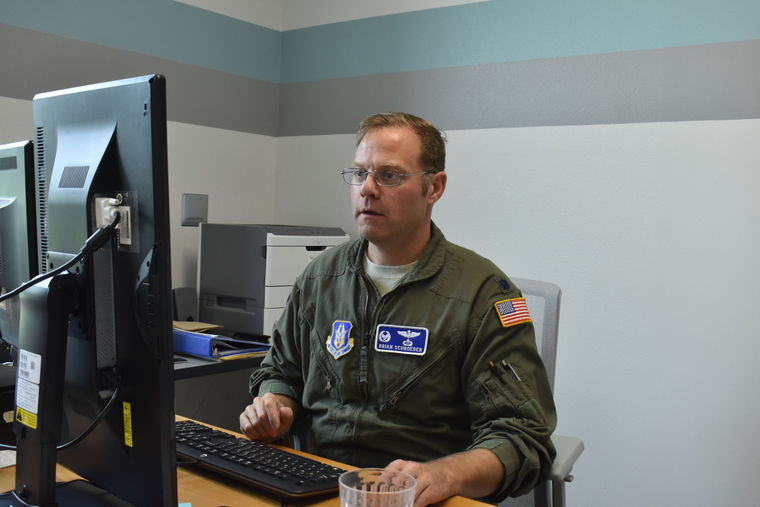Lt. Col. Brian Schroeder has been watching with keen interest the past two weeks as the southeastern part of the nation has been hammered by Hurricanes Harvey and Irma.
Now Maria, a Category 5 storm, is making its way through the Caribbean. Schroeder is interested in these storms, even though they’re hundreds of miles away, because he’s had the chance to be in the eye of storms like these.
“Most storms had pretty severe turbulence and you get bumped around a lot,” Schroeder said. “It’s definitely not for the faint of heart and those who don’t like to fly, that’s for sure.”
The professor of aerospace studies and Air Force ROTC Detachment 780 commander entered into hurricanes 47 times during his career as a “hurricane hunter,” as well as a few tropical storms.
Schroeder, who moved to Brookings in August, has served in the Air Force for 22 years as a weather officer, with six of those years working as a hurricane hunter. He was part of an aircrew that flies directly into mammoth storms, like Harvey and Irma, to gather data for the National Hurricane Center.
A Nebraska native, Schroeder graduated from the University of Nebraska – Lincoln, where he studied meteorology and climatology.
Schroeder said he would fly into hurricanes and tropical storms and gather information by flying close to the surface of the water, searching for the circulation for the storm. He would then remain flying in the storm as long as it was a threat to coastal areas, which could last hours at times. Schroeder recalled a flight over the northeast Pacific that lasted about 13 1/2 hours.
As a result of the recent hurricanes ravaging the southern region of the U.S., there have been fatalities, massive damage and flooding in several cities.
Although storms like Irma and Harvey have had the hardest impact, hurricanes like these would be the easiest for Lt. Col. Schroeder to engage during flights.
“Actually, some of the storms that are the most tranquil and easy to fly through are those like Irma,” Schroeder said. “It’s a strong, Category 5 storm, very well developed and not changing much dynamically. Meteorologically, it’s a pretty sound storm, so it’s not undergoing many low-level changes.”
Schroeder said the storm that caused him to have a, “Do I really want to do this as a career?” moment was Hurricane Paloma, an Atlantic hurricane that occurred in Nov. 2008.
“We flew through and the storm just bombed out and exploded into this category three storm and was going through a lot of dynamic change. At that point and we were getting batted around like little toys,” Schroeder said.
Todd Heitkamp, warning coordination meteorologist at the Sioux Falls, National Weather Service, said that Harvey and Irma were opposites on the polar spectrum, with Harvey being a severe threat because of the heavy rain and Irma being a severe threat because of the strong winds.
“Harvey and Irma were both Category 4 hurricanes when they hit the mainland and that’s the first time two hurricanes that intense have hit in the same year,” Heitkamp said.



















